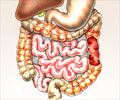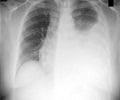World Tuberculosis Day which falls on March 24th is observed each year with renewed vigor to continue the global fight against tuberculosis.
World Tuberculosis Day which falls on March 24th is observed each year with renewed vigor to continue the global fight against tuberculosis—an infectious airborne disease that is getting deadlier by the day due to its growing drug resistance and the fatal connection between TB and HIV. TB is preventable and curable if patients stick to drug regimens.
The WHO’s theme for World TB day 2009 continuing from last year’s “I am Stopping TB” is a clarion call for all people—those affected with TB and those who can help in any way in stopping TB such as health professionals, care givers, NGO field workers, all responsible citizens of a civil society—even children, as illustrated in the kids’ cartoon work, “The Magic of DOTS.”Tuberculosis or TB (short for tubercle bacillus) is a common, yet dangerous infectious disease caused by Mycobacterium tuberculosis. Although TB affects the lungs in most of the cases, the disease can also affect the body’s central nervous system, genitourinary system, circulatory system, lymphatic system, gastrointestinal system, joints, bones and even the skin. Symptoms of TB include prolonged cough with sputum and blood, weakness, fever, night sweats and weight loss.
Shocking TB Facts
• Over 4,00,000 cases of Multi Drug Resistant TB (MDR-TB) are reported across the world every year with more than 1,00,000 estimated deaths
• 80, 000 MDR-TB cases from India each year
• 64% of the TB patients are women
• Upto 80% of TB patients test positive for HIV/AIDS in countries with high AIDS incidence
Challenges in TB Treatment
Multi –Drug Resistant TB (MDR-TB) is posing a challenge to health professionals by its resistance to two of the first line drugs used to cure TB—rifampicin and isoniazid. It is caused by the spontaneous mutation of the bacteria or by the patient’s default on treatment. More serious is the XDR-TB or eXtensively drug resistant TB that is also resistant to fluoroquinolones and to the injectibles—Kanamycin, Capreomycin and Amikacin.
MDR-TB and XDR-TB are the biggest health hazards for people living with HIV/AIDS. With the social stigma attached to AIDS, detecting TB becomes doubly difficult.
In developing countries like India patients stop medication for the following reasons: migration, alcohol, drug addiction, and sometimes due to violent side effects like vomiting that discourage the patient from further medication. Sometimes treatment is stopped after a couple of months, when the symptoms subside.
Dedicated (Directly Observed Treatment, Short Course) DOTS providers regularly track TB patients and encourage them to continue with the treatment till they are completely cured.
According to the World Health Organization (WHO) guidelines, the coordinated efforts by Health Care Providers, families and patients can help to completely eradicate TB.
Role of Health Care Providers:
• Organize effective campaigns to inform people about TB control and DOTS with a view to increase self-referral and facilitate detection of TB cases
• Enable patients—especially the vulnerable and marginalized such as women and transgender people to access DOTS and other TB services
• Ensure quality of TB services provided in public or private enterprises
Role of Families:
• Give an honest and detailed history in order to help the health care provider reach a correct diagnosis
• Get anyone with cough or fever for more than three weeks tested for TB and take him/her to the nearest DOTS center
• Ensure that the anti-TB medicines are taken regularly
• Promote the fact that TB is curable, by talking freely about the disease, thus helping to reduce stigma attached to TB
Role of Cured TB patients:
• Share your story with others to spread the awareness about how DOTS cured you
• Educate others in your community about TB symptoms to increase self-referrals for DOTS
• Help to remove misconceptions about TB
• Encourage ignorant people who may be TB patients to seek help for diagnosis and treatment
DOTS Plus
The World Bank has identified Directly Observed Treatment, Short Course (DOTS) as the most cost-effective health strategy available for treating TB patients effectively, preventing drug resistance and new infections.
DOTS Plus is an initiative launched in India to tackle the challenge of MDR TB and XDR-TB. According to Tuberculosis Control India (TBC), Intermediate Reference Laboratories (IRLs) will perform culture and Drug Sensitivity Test (DST) to diagnose MDR-TB.
After diagnosis, in-house patient care will be referred to tertiary centers such as medical colleges and speciality hospitals after which the patients will be referred to DOTS centers for follow up action and drug delivery.
The dire need to stop TB in its tracks prompts a worldwide mission to seek new approaches, strategies and tools such as new TB vaccines for people of all ages, to protect against all forms of TB. With a number of global initiatives for new drugs and diagnostic tools along with whole -hearted community participation to eradicate TB, a world free of TB is a dream that may soon be realized.
Source-Medindia
Thilaka Ravi/L
 MEDINDIA
MEDINDIA



 Email
Email










